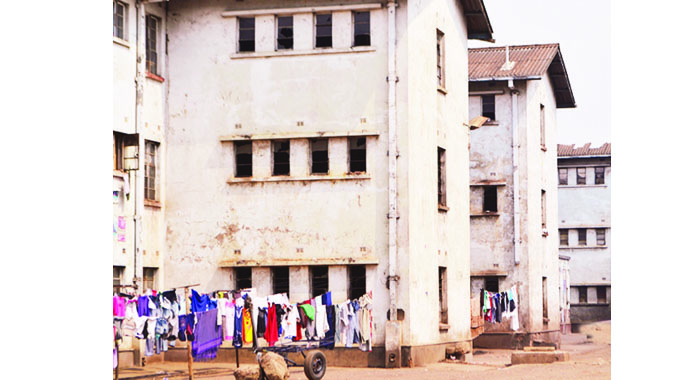What comes first: Urban renewal or regularisation

Pardon Gotora Urban Scape
At a local gym in Harare, before the Covid-19 lockdown, I was listening to a very fascinating debate between two gentlemen, Graig Mapfumo and another nicknamed “Super”.
The debate was on what should be our priority as a nation, urban regeneration or regularisation of informal settlements.
Their debate hovered around Harare City, but the issues discussed have a national perspective and significance. Graig, standing in the blue corner, argued for urban renewal as the top priority.
He argued for unlocking value in the existing suburbs rather than concentrating on informal settlements.
I developed an inclination towards his line of thought, and I saw where he was coming from.
An environmental scan will obviously paint a gloomy picture of the old suburbs, especially the formerly “African Townships”.
The country is marred with blighted areas characterised by some derelict buildings that are posing a health hazard to the inhabitants.
There is a huge disparity between these blighted areas and the leafy suburbs. It resembles astronomical inequalities and social exclusion between the residents of the two suburbs. Some occupants’ rates in some of these blighted areas are astonishing to say the least.
In Mbare, the likes of Nenyere Flats, Mbare Flats, Matererini Flats and Shawasha Flats’ tale leaves a lot to be desired.
These flats were built by the colonial regime as bachelors’ flats, meant to accommodate black “migrant workers” predominantly of male orientation.
They were never meant for a family set up. Nowadays, a single bachelor’s flat houses at least four families, and partitioned by curtains, wardrobes and kitchen cupboards.
Privacy is observed through playing radios and televisions at high volume so that the neighbour does not follow the goings-on in the next “room”.
Ablution facilities are communal, shared by all residents on the same floor. The families extended, but the facilities were not.
Communally-run facilities suffer from neglect and mismanagement. Not every community member is responsible enough to clean-up the toilets and bathrooms.
It is difficult to enforce the kind of material used in the toilets. The level of poverty in these areas has crippled people such that they have limited means of survival. Most of these flats are rented from council, so there is no sense of ownership from the occupants.
The situation is exacerbated by the fact that, those occupying these premises are not the original allottees who hold leases from council.
There is a lot of subletting happening, so the “owner” tries to maximise on the rentals by ensuring that there are more occupants in the apartment to increase the collections.
Unlike in other old suburbs such as Highfield, Mufakose, Mabvuku, or Kambuzuma, a flat cannot be extended.
However, the only reprieve for such settlements comes from urban renewal. This a process of regenerating all blighted areas and replace with modern and conventional estates.
Depending on the structural strength of the building, some may need refurbishing and partitioning to accommodate family set-ups and stand-alone ablution facilities.
Others may require to be razed down and replaced with better superstructures that meet the aesthetics of the modern world. This is the opportunity for vertical space utilisation.
In Zimbabwe, walk-up flats are usually one plus three floors. Five floors and above would require elevators to complement the staircases. Elevators require consistent power supply, otherwise, residents will be stranded again.
From the white corner, Super’s viewpoint was that, as a nation, we should first deal with the scourge of informal settlements.
I also fell in love with his argument, where he was trying to showcase the potential that could be unlocked with formalisation of the existing informal settlements, particularly in reducing the housing backlog and increasing the housing stock.
In all the peri-urban areas, we have plenty of informal settlements.
Some of these settlements started as formal, but greed on the part of the community leaders has led to improper subdivision of open spaces, institutional spaces, buffer zones and stand land or council land for sale to unsuspecting home-seekers, thereby creating informal settlements.
Most of these informal settlements have deplorable living conditions as they lack basic facilities and social amenities such as safe drinking water, sanitation, ventilation, proper disposal of solid waste, exposure to fire outbreaks, floods and violence, poor land use planning, poor road networks, poor personal hygiene and unhygienic conditions.
There are a few who have tried to drill communal boreholes, however, they are not enough. The populations in these informal settlements are scary.
The living conditions are a time-bomb as they are susceptible to what writers Corbum and Sverdlik in 2017 referred to as triple threats of infectious diseases, non-communicable conditions (such as diabetes, cardiovascular diseases and mental illnesses) and injuries due to violence and road traffic accidents.
So as the debate raged on, I started to ponder on my own.
What is the country’s strongest foot to put in-front, urban renewal or informal settlements regularisation?
It is my strongest conviction that at some point the same should happen to policy makers as well.
If we were to get a billion US dollars today and we only have one priority to expend the money on, what would we invest the money on?
Old locations have the advantage of proximity to existing infrastructure.
However, the infrastructure is already obsolete and epitomised by incessant bursts and water rationing, and they need major overhaul to accommodate the renewed settlements, which requires huge capital outlay.
Informal settlements have the advantage of the greatest potential that they have, once services are provided, it broadens revenue base for local authorities, adds to the existing housing stock and reduce the housing backlog.
However, the bulk infrastructure has wreaked havoc, especially the huge capital outlay required.
Therefore, what should be at the top of the country’s priority, urban renewal of regularisation?









Comments